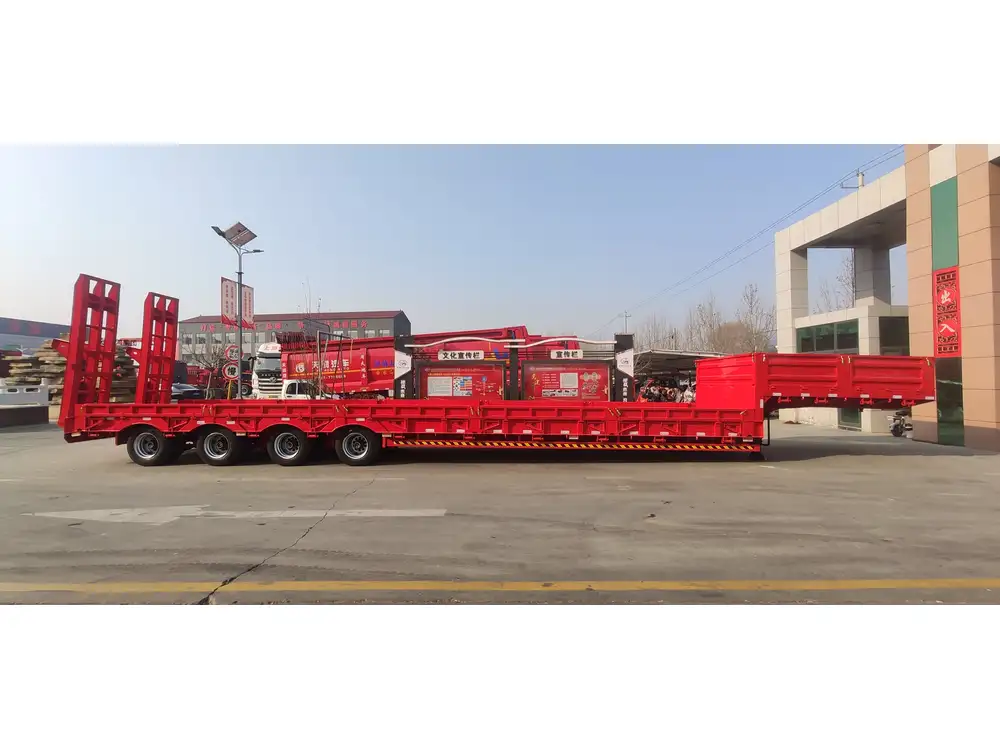Reversing a semi-trailer is an indispensable skill for truck drivers, fleet operators, and logistics professionals alike. This intricate maneuver, often daunting for newcomers, can significantly impact the efficiency of freight transportation. The ability to adeptly manage reversal can lead to operational advantages and enhanced safety on the road. This comprehensive guide delves into techniques, tips, and best practices for effectively reversing a semi-trailer.
Understanding the Basics of Reversing a Semi-Trailer
Importance of Proper Reversal
Reversing a semi-trailer involves intricate coordination of vehicle and trailer angles. Effective backward maneuvering can:
- Reduce risk of accidents.
- Enhance loading and unloading efficiency.
- Improve overall road safety.
- Prevent damage to the trailer and cargo.

Components of a Semi-Trailer
To appreciate the complexity of reversing a semi-trailer, it is essential to understand its components:
| Component | Function |
|---|---|
| Fifth Wheel | Connects trailer to truck, allowing pivot. |
| Kingpin | Joins the trailer to the fifth wheel. |
| Axles | Support the weight and provide stability. |
| Tandem Assembly | Allows adjustment of weight distribution. |
Techniques for Reversing a Semi-Trailer
The S-Shape Maneuver
The S-shape method is a favored approach among seasoned drivers, as it facilitates controlled movement of the trailer.
- Positioning: Begin with your truck straightened, ensuring ample space.
- Reverse Slowly: Engage reverse and back slowly, monitoring the trailer’s alignment.
- Steering Input: As the trailer moves, turn the steering wheel towards the direction you want the rear of the trailer to go.
- Small Adjustments: Make small steering wheel corrections to maintain alignment.

The Straight Back Method
For instances where space is limited, the straight back method can be employed effectively.
- Level Ground: Start on level terrain to achieve optimal control.
- Mirror Check: Utilize your mirrors to align the trailer with the desired path.
- Steady Pace: Reverse at a slow and steady pace, ensuring no sudden movements.
- Corrective Actions: If misalignment occurs, stop and adjust before proceeding.
The Docking Technique
Ideal for backing into docks or tight spaces, the docking technique is more sophisticated but extremely effective.
- Approach Angle: Approach the docking area at a slight angle.
- Set Up: Position the truck parallel to the dock, leaving sufficient width for the trailer.
- Reversal: Shift into reverse, maintaining the angle while checking mirrors for clearance.
- Final Adjustment: Once close, straighten the truck while continuing to reverse until the trailer is docked.
Common Challenges When Reversing

Misjudgment of Distance
Drivers often overestimate or underestimate the distance to the trailer’s turn. Employing a markup system (like visual cues on the ground) can mitigate this error.
Trailer Swing
The phenomenon where the trailer swings out wider than anticipated can lead to collisions with obstacles. Maintaining smooth steering inputs and being mindful of the angle will help counteract this.
Visibility Limitations
Visibility can pose a significant challenge, especially in low-light conditions. Using additional lighting and reflective gear can enhance visibility, making it easier to gauge distances and angles effectively.

Safety Considerations While Reversing
Pre-Maneuver Safety Checks
- Inspect the Area: Conduct a thorough scan for obstructions, pedestrians, and other vehicles.
- Use a Spotter: Enlist a spotter when navigating particularly tight or complex areas.
- Check Mirrors Regularly: Continuous mirror checks can provide real-time updates on the trailer’s position.
After-Hours Reversing
During late-night operations, utilizing reflective cones or road flares can illuminate the surroundings and prevent accidents.

Tools and Equipment That Aid Reversal
Employing certain tools can greatly enhance the safety and ease of reversing a semi-trailer.
Reverse Camera Systems
Integrating a reverse camera system offers a clear view of trailer positioning, thereby reducing blind spots.
Trailer Sway Control Systems
Advancements in trailer sway control technology help maintain safe driving conditions, thus reducing the risk of accidents.
| Equipment | Benefits |
|---|---|
| Reverse Cameras | Enhanced visibility, reduced blind spots |
| Sway Control Systems | Improved stability and safety |
| GPS Technology | Effective path planning and navigation |

Practical Tips for Improvement
Training and Practice
Regular training can significantly improve reversing skills. Whether through simulators or practical field experience, consistent practice makes a marked difference.
Simulation Tools
Utilize virtual simulators to practice maneuvering scenarios in a risk-free environment. Various software options are available that mimic real-world scenarios, enriching the learning experience.

Peer Guidance
Learning from experienced peers can accelerate skill acquisition. Don’t hesitate to ask for tips or watch others perform the maneuver.
Record and Review
Filming your reversing maneuvers can provide valuable feedback. Reviewing the footage allows you to identify areas for improvement.
Conclusion: Perfecting the Art of Reversing
Reversing a semi-trailer is an acquired skill that transcends mere technical ability. It encompasses an understanding of vehicle dynamics, spatial reasoning, and a commitment to safety. By employing the techniques and practices explored in this guide, drivers can become adept at reversing their semi-trailers with confidence.

Continuous Learning
The world of logistics and transportation is constantly evolving. Stay updated with new technologies and techniques through ongoing training and education. Engaging with industry forums can also help share experiences and gain insights from fellow drivers.
Mastering the complexities of reversing a semi-trailer can ultimately enhance professional performance, streamline operations, and solidify a reputation for operational excellence in the field.



